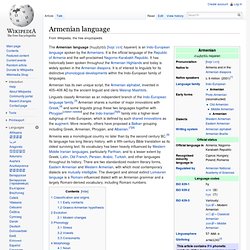

Enduring Voices. Science & Environment - Can we save the world’s dying languages? After witnessing how one of our earliest languages is in danger of disappearing, Gaia Vince looks at efforts to preserve our oral culture.

Along Lake Eyasi in northern Tanzania I come across the Hadza community sitting in male- and female-only groups, with the men playing small lute-like stringed instruments and applying a pre-hunt poisonous tree resin to their metal arrowheads. They light a small fire by rapidly twisting a hardwood twig into a softwood stick from the local Commiphora tree. It soon smoulders and, intrigued, I have a go too.
It's surprisingly difficult, but with their help, I get it to smoke eventually. I've travelled four hours west from the city of Arusha to meet this ancient tribe of hunter-gatherers, and join them in a bow-and-arrow hunt for prey among the thorn bushes. That’s not all that sets them apart from most societies. Dying out However the language may not be around for long. The Hadza are not alone in facing the loss of their native tongue. Unlikely saviour. Armenian language.
The Armenian language (հայերեն [hɑjɛˈɾɛn] hayeren) is an Indo-European language spoken by the Armenians.

It is the official language of the Republic of Armenia and the self-proclaimed Nagorno-Karabakh Republic. It has historically been spoken throughout the Armenian Highlands and today is widely spoken in the Armenian diaspora. It is of interest to linguists for its distinctive phonological developments within the Indo-European family of languages. Armenian has its own unique script, the Armenian alphabet, invented in 405–406 AD by the ancient linguist and cleric Mesrop Mashtots. Armenia was a monolingual country no later than by the second century BC.[9] Its language has long literary history, with a fifth-century Bible translation as its oldest surviving text.
Classification and origins[edit] Early contacts[edit] The large percentage of loans from Iranian languages initially led linguists to erroneously classify Armenian as an Iranian language. W. Graeco-Armenian hypothesis[edit] Top 10 Rarest Languages. Most of the time when thinking of language, people will automatically think about English, German, French, Spanish, and maybe others like Japanese, Arabic, Russian, and possibly Latin.

Language is something that many people today take for granted. Without it, there’d be no communication, and no way to connect with others in the world. Imagine a life without a common language that at least a few others around you know. Sure people could write books and novels, but it’d be rare for someone else to understand. Tibetan alphabet. The Tibetan alphabet is an abugida of Indic origin used to write the Tibetan language as well as the Dzongkha language, Denzongkha, Ladakhi language and sometimes the Balti language. The printed form of the alphabet is called uchen script (Tibetan: དབུ་ཅན་, Wylie: dbu-can; "with a head") while the hand-written cursive form used in everyday writing is called umê (Tibetan: དབུ་མེད་, Wylie: dbu-med; "headless"). The alphabet is very closely linked to a broad ethnic Tibetan identity.
Besides Tibet, it has also been used for Tibetan languages in Bhutan, India, Nepal, and Pakistan.[1] The Tibetan alphabet is ancestral to the Limbu alphabet, the Lepcha alphabet,[2] and the multilingual 'Phags-pa script.[2] The Tibetan alphabet is romanized in a variety of ways.[3] This article employs the Wylie transliteration system. History[edit] Three orthographic standardizations were developed. Description[edit] The Tibetan alphabet has thirty basic letters, sometimes known as "radicals", for consonants.[2]
Dhivehi language. Maldivian ( ދިވެހި divehi) is an Indo-Aryan language predominantly spoken by about 350,000 people in the Maldives where it is the national language. It is also the first language of nearly 10,000 people in the island of Minicoy in the Union territory of Lakshadweep, India, where the Mahl dialect of the Maldivian language is spoken. The Maldivian name for the language is Divehi (literally "Maldivian").